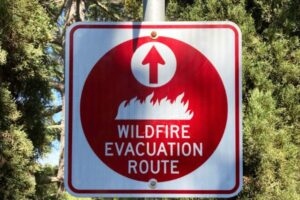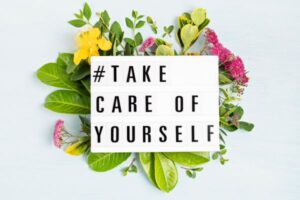If you live in a wildfire region there are things you can do ahead of the onset of a fire. There are also steps you can take to ease the wildfire trauma for you and your family. I gleaned this outline of information for you to follow from the National Child Trauma Stress Network, Wildfire Resources. For more detailed information, please visit their website to use their resources. They offer a variety of resources for families to ensure you and your family are prepared for wildfire disasters.
Take These Steps to Ease Wildfire Trauma for Your Family
If you take steps to prepare yourself and your family for this type of emergency, it lessens the chances of members of your family suffering from subsequent post-traumatic stress syndrome.
Reduce the Risk of Wildfire Trauma by Being Prepared!
- Know the wildfire risk in your area and ensure you have insurance that covers this type of disaster.
- Inform yourself about how to access official wildfire information and know which radio stations, websites, or social media provide current and reliable updates. Sign up for community alerts.
- Develop a concrete evacuation plan that includes the best and alternate routes to evacuate by car and foot from your home, work, and school and include in your plan, where everyone is located at the time of evacuation.
- Assemble an emergency go kit. Families should have access to enough water, food, and other emergency supplies for 3 or more days and medications for 7 or more days. Review the family preparedness plan.
- Make a family communication plan with contact information and know who to contact if you get separated. Fill out the preparedness wallet card.
- Groom and maintain your landscape regularly. Keep your low-hanging and dead tree limbs trimmed, remove debris, and clean the gutters. Move and keep gas grills and propane tanks away from the house.
- Educate children about wildfires. Plan and practice evacuations together. The mobile app Help Kids Cope provides information on how to talk to children of different ages.
What to do During a Wildfire
When you are not in an evacuation zone
- Minimize exposure to smoke and ash by staying indoors and closing doors, windows, vents, and fireplace screens and set their air conditions to recirculate the inside air.
- Be ready to evacuate quickly. Keep cars fueled and repaired, keep cell phones charged, make arrangements for pets and livestock to be kept cool, hydrated and fed if you are unable to take them with you.
- Water your roof and shrubs to reduce potential damage.
- Stay informed and evacuate when needed. Conditions change rapidly so when officials announce it is time to evacuate, do it.
During an evacuation
- Grab your emergency go kits, all loved ones, and pets in your vehicles. Keep emergency information on in the car once you have evacuated safely. Expect that smoke will reduce visibility, drive slowly, and keep the windows and air vents closed. Do not return home until the authorities give permission.
- Protect your property by turning on outside lights and leave a light on in every room to make the house more visible in smoke. Try to move flammable furniture to the center of the home, away from windows and glass doors. Also, remove flammable curtains and window treatments. Families should follow their plan to keep pets and livestock cool, hydrated, fed, and safe if they cannot evacuate them.
- Locate a public shelter if needed. Families can text SHELTER and their zip code to 43362 (4FEMA) to find the nearest open shelter. Also, download the American Red Cross Shelter Finder app.
Immediately after a wildfire is contained
- Evaluate for injuries and health issues. Get immediate medical assistance or basic first aid if needed.
- Watch for active burn areas. At times there can be hot spots that can ignite. Families should evacuate and stay away from smoldering surfaces or debris, ash pits, and charred trees.
- Keep smoke out. Although the danger of the fires has passed, smoke and ash will still be in the air. Keep windows, vents, and fireplace screens closed until the air quality improves.
- Evaluate the safety of your yard and surrounding area. Scan your yard to make sure it is safe for children to come outside. Caution them to keep away from fallen power lines and immediately report them to the utility company.
- Use caution when you clean your home while wearing masks and safe shoes. Throw away contaminated food, and don’t use the water until you are given the go-ahead by officials.
Soften the Blow of Wildfire Trauma for Children
- Even though these are sudden changes, be the model of calm behavior for your children who will watch the adults and learn from their example.
- Use a quiet, steady voice to explain things to your children.
- Assure them that the firefighters work hard to put out fires so that they realize that adults are there to protect them.
- Also, make sure they understand that while fires burn for several days to weeks, their home is not always in danger.
- Help them understand when the fire is contained.
- Encourage activities that comfort or distract children from worry and trauma.
- Teach children to take slow breaths to calm themselves and give a stuffed animal or blanket to hold.
- Encourage activities that don’t exert much physical effort, such as board games, reading, or building a puzzle.
- View these handouts for some ideas.
- Take care of yourself so that you can continue to care for others!
- You and your children will benefit when you take a moment for yourself, acknowledge your own fears and take steps to cope.
Working with the Trauma after a Wildfire
As it is explained on the National Child Trauma Stress Network, Wildfire Resources web page, everyone’s post-wildfire stories are different and that depends on what you had to go through to survive. Some of you will return to your homes quickly and some have to rebuild or relocate. Regardless of your individual circumstances, the aftermath is usually one of hardship for everyone involved.
Children react according to their age, developmental level, and prior experiences. But remember that your children will model your behavior. Observe and be understanding if they get too clingy or have more headaches and stomachaches, have trouble at school, or withdraw from activities they used to enjoy. These are all signs of the effects of trauma.
Here is a brief outline of considerations for adults to care for their children in the aftermath of wildfire trauma:
- Model being calm and hopeful after the wildfire.
- Provide accurate information and answer questions honestly and at an appropriate developmental level.
- Be patient when responding to changes in behavior.
- Provide reassurance, a daily routine, and structure.
- Pay attention to your own well being and coping first so that you can help your children.
- VIA National Child Trauma Stress Network
Recommended Reading: Natural Disasters Guide and Resources
It is our wish that you find this post enlightening and helpful. If you have any questions or suggestions, we love to hear from you in the comments below. Also, kindly accept our invitation to join our group on Facebook to surround yourself with kindred spirits and post your encouraging messages.









































